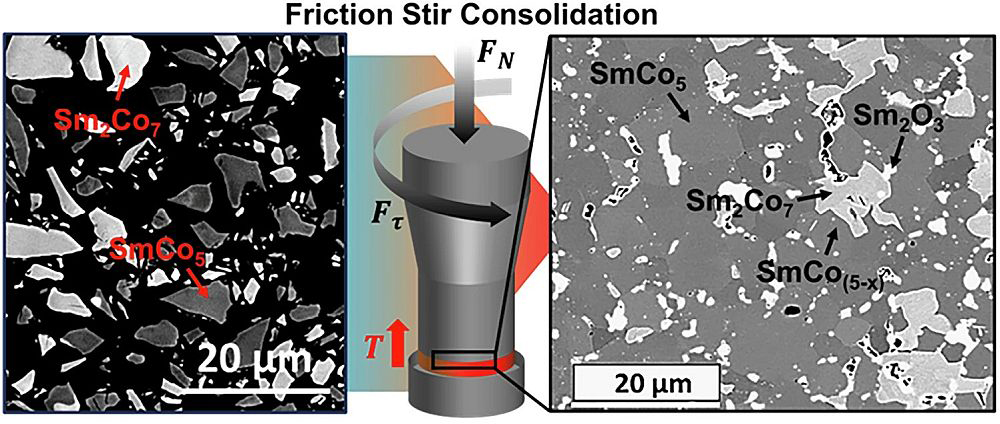
[Image above] The rapid lithification of slag, a byproduct of steel production, over the course of decades rather than millennia is concerning for the environment but could offer clues to mimicking this process for sustainable manufacturing purposes. Credit: lenina11only, Shutterstock
As noted in last Thursday’s CTT, the 2010s were a decade of acceleration for climate change. Natural processes that conventionally take decades or centuries to occur are now happening on the scale of years instead.
Even as we strive to develop solutions to adapt to these changes, we are still discovering new changes in the environment of which we were previously unaware. Researchers from the University of Glasgow in Scotland recently reported on another such discovery, which could have significant impacts on waste management at steel foundries around the world.
Lithification: A look at the Earth’s natural rock-making process
In Earth sciences, the term lithification (which derives from the Greek root word lithos, meaning stone) describes the complex process by which unconsolidated sediments—such as sand, clay, or mud—are converted into solid sedimentary rock. This process involves two primary mechanisms:
- Compaction: As layers of sediment accumulate, the weight of overlying material compresses the lower layers, squeezing out pore water and reducing the overall volume. Individual grains are thus gradually brought closer together, and the material’s density increases.
- Cementation: As the sediment layers compact, dissolved minerals present in the pore fluids precipitate out of solution and form a natural glue, binding the sediment grains together. Common cementing minerals include calcite (CaCO3), silica (SiO2), and iron oxides.
Lithification normally takes place over millions of years. But as we know from similar physical transformations, such as soil stabilization through mineralization, human intervention can drastically accelerate natural processes.
Concrete production is like lithification because it also involves the binding of smaller particles to form a solid mass. This process, however, is mostly complete within just a few days—and only takes a month to reach full strength—thanks to the use of cementing materials that are engineered for fast curing.
In recent years, the construction industry has reduced the carbon footprint of concrete, which is one of the largest contributors to greenhouse gas emissions. Incorporating waste materials can improve the curing rate or the physical properties of the concrete. You can see this trend in research on concrete additives such as glass, carbon fibers, or fly ash. Such additives also reduce the burden on landfills, giving this trend an added benefit.
While the use of waste materials to hasten curing of concrete is desirable, unexpected rapid lithification in the environment triggered by human activities, such as improper disposal of steel slag, could have negative impacts on biodiversity and coastal management.
Understanding steel slag
Steel slag is a byproduct of steelmaking. It is composed of impurities removed from the molten steel, such as oxides of calcium, silicon, iron, aluminum, manganese, and magnesium.
Steel slag can be used as aggregate in concrete or asphalt for roadbuilding or as railway ballast. However, much of it is sent to landfills, where its heavy metals can leach into groundwater—posing dangers to people and wildlife downstream as well as triggering unexpected chemical reactions in the surrounding environment.
Rapid lithification of industrial waste
The University of Glasgow researchers discovered that steel slag was triggering rapid and unplanned-for rock development thanks to intriguing irregular formations at Derwent Howe in West Cumbria.
Derwent Howe was home to iron and steel-making foundries during the 19th and 20th centuries. Its coast accumulated 27 million cubic meters of furnace slag over the course of its industrial history.
The researchers took detailed observations at 13 sites across the foreshore, and they determined that Derwent Howe’s slag materials contain deposits of calcium, iron, magnesium, and manganese, which are highly reactive metals. When exposed to seawater and air, these reactive materials interact to create natural cements, including calcite, goethite, and brucite.
The Cumbrian steel slag studied by the University of Glasgow researchers contains oxides of calcium, iron, magnesium, and manganese, which are highly reactive metals. They found a pull tab from a soda can embedded in the various chemical cements in the steel slag deposit was dated to within the last 35 years. Cementation rapidly occurred by exposure of these reactive metals to seawater and air.
Thanks to items found embedded in the irregular formations, such as an aluminum pull tab from a soda can, the researchers determined that rock formation was taking place over a maximum timeframe of 35 years, in contrast to the millennia of natural lithification.
This discovery “challenges our understanding of how a rock is formed, and suggests that the waste material we’ve produced in creating the modern world is going to have an irreversible impact on our future,” says Amanda Owen, senior lecturer in the School of Geographical and Earth Sciences at the University of Glasgow, in a press release.
The paper, published in Geology, is “Evidence for a rapid anthropoclastic rock cycle” (DOI: 10.1130/G52895.1).
Silver lining: Harnessing the anthropoclastic rock cycle for carbon sequestration
The rapid transformation of a sandy beach into a rocky shoreline raises many concerns about the impact on local ecosystems—and leads to the realization that we may have less time than we thought to find more sustainable solutions for waste disposal. But the discovery could also offer clues to developing more sustainable manufacturing practices.
For example, carbonation is another geological process that inherently captures carbon dioxide. Accelerated carbonation is attractive for industries, such as steelmaking and concrete production, looking to reduce their carbon footprint. Nippon Steel and Solidia Technologies are two companies working on accelerated carbonation of steel slag and cement, respectively. In addition to reducing emissions, the carbonation process can improve the product’s mechanical properties, such as increasing compressive strength and corrosion resistance.
The process of lithification can incorporate carbonation, so gaining a better understanding of rapid lithification could support research and development on carbonation as a carbon sequestration process.
So, while the unanticipated change to natural cycles is undeniably concerning, the University of Glasgow study could provide insights into accelerated natural processes that ultimately lead to better waste management and lower carbon emissions.
Author
Becky Stewart
CTT Categories
- Environment
- Manufacturing
Related Posts
More than just tiles: Kaolin’s surprising role in food production
September 23, 2025
‘Fairy circles’ may help mark natural underground hydrogen deposits
September 18, 2025


